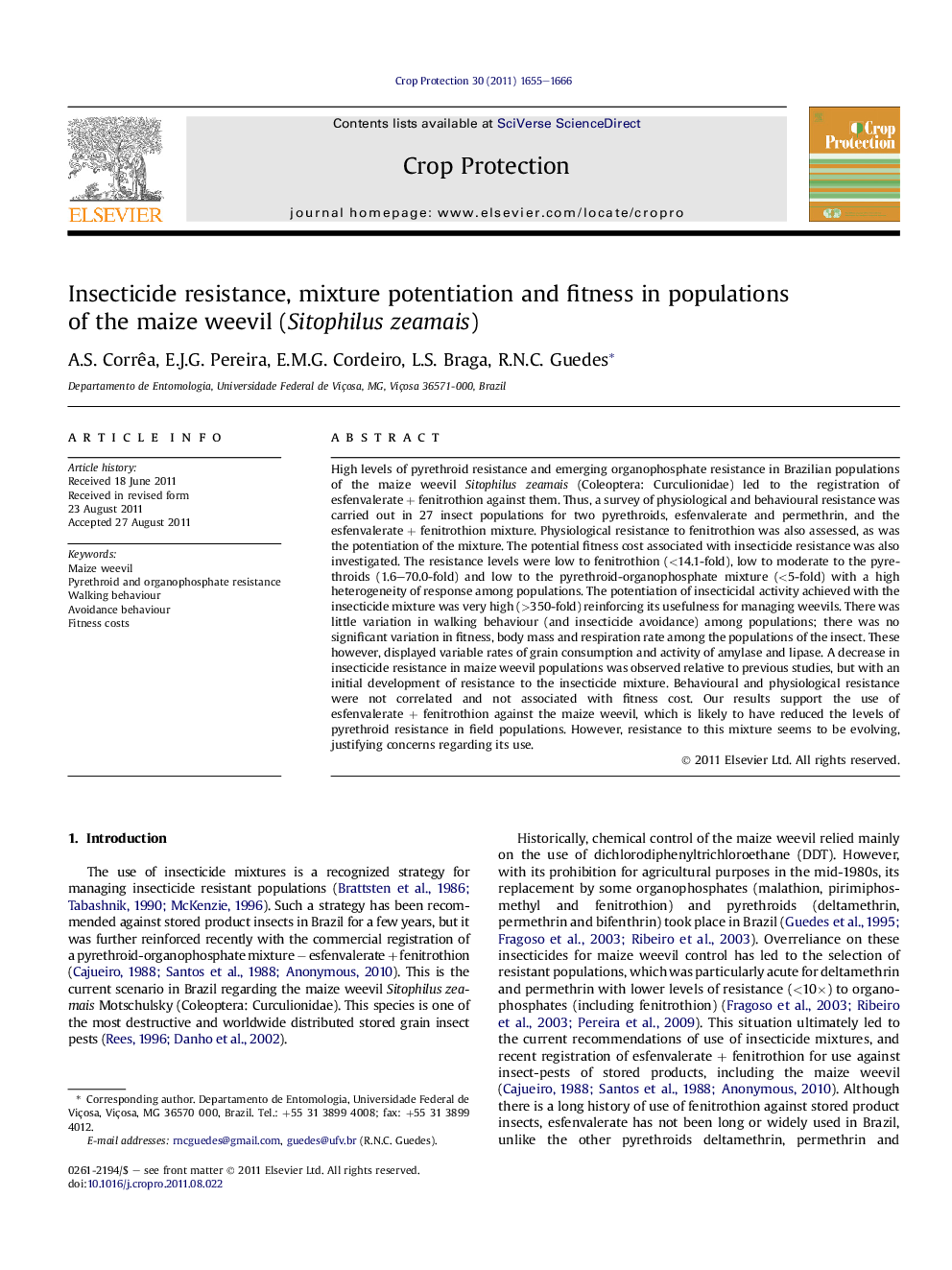| Article ID | Journal | Published Year | Pages | File Type |
|---|---|---|---|---|
| 4506555 | Crop Protection | 2011 | 12 Pages |
High levels of pyrethroid resistance and emerging organophosphate resistance in Brazilian populations of the maize weevil Sitophilus zeamais (Coleoptera: Curculionidae) led to the registration of esfenvalerate + fenitrothion against them. Thus, a survey of physiological and behavioural resistance was carried out in 27 insect populations for two pyrethroids, esfenvalerate and permethrin, and the esfenvalerate + fenitrothion mixture. Physiological resistance to fenitrothion was also assessed, as was the potentiation of the mixture. The potential fitness cost associated with insecticide resistance was also investigated. The resistance levels were low to fenitrothion (<14.1-fold), low to moderate to the pyrethroids (1.6–70.0-fold) and low to the pyrethroid-organophosphate mixture (<5-fold) with a high heterogeneity of response among populations. The potentiation of insecticidal activity achieved with the insecticide mixture was very high (>350-fold) reinforcing its usefulness for managing weevils. There was little variation in walking behaviour (and insecticide avoidance) among populations; there was no significant variation in fitness, body mass and respiration rate among the populations of the insect. These however, displayed variable rates of grain consumption and activity of amylase and lipase. A decrease in insecticide resistance in maize weevil populations was observed relative to previous studies, but with an initial development of resistance to the insecticide mixture. Behavioural and physiological resistance were not correlated and not associated with fitness cost. Our results support the use of esfenvalerate + fenitrothion against the maize weevil, which is likely to have reduced the levels of pyrethroid resistance in field populations. However, resistance to this mixture seems to be evolving, justifying concerns regarding its use.
► Resistance levels were low to moderate to fenitrothion, pyrethroids and esfenvalerate + fenitrothion mixture. ► There was high heterogeneity of response among populations of Sitophilus zeamais. ► The insecticide mixture led to high levels of potentiation of insecticidal activity. ► There was significant, but little variation in walking behaviour among populations. ► Physiological and behavioural resistance were not correlated and not associated with fitness cost.
